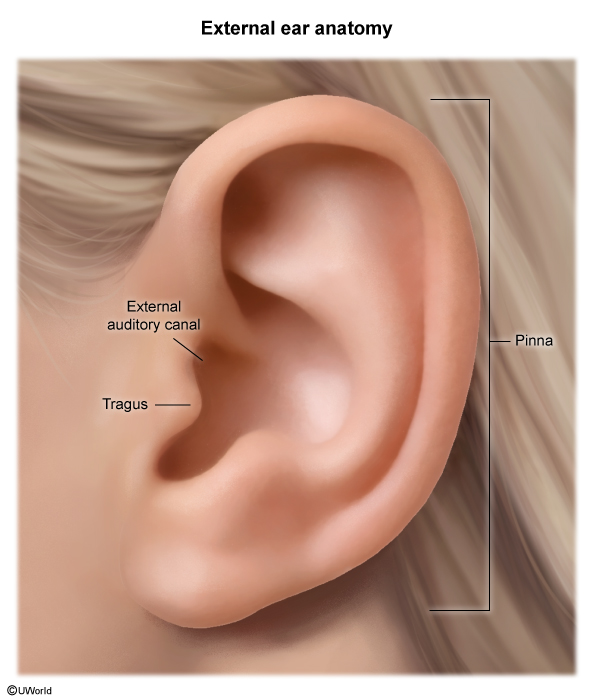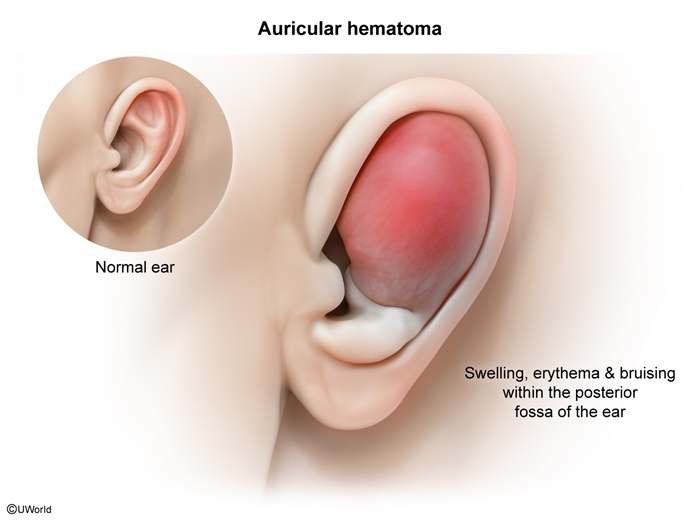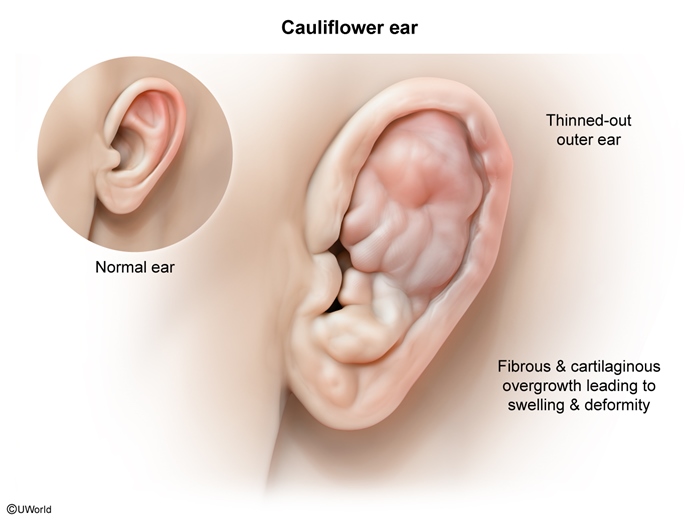Auricular Hematoma And Cauliflower Ear
Article Sections
Introduction
Auricular hematomas result from blunt trauma (eg, direct blows, repetitive friction) that shears the perichondrium from the cartilage, tearing small blood vessels and allowing blood to accumulate in this potential space. This disrupted vascular supply impairs nutrient diffusion, leading to ischemia and, if untreated, fibrocartilaginous overgrowth and deformity (eg, cauliflower ear). This article discusses both auricular hematoma and cauliflower ear.
Pathophysiology
The auricle (pinna) is composed of elastic cartilage covered by tightly adherent skin and perichondrium (Figure 1). The perichondrium is the blood supply of the avascular cartilage.
Trauma separates the perichondrium from the cartilage, resulting in bleeding into the newly created potential space. This hematoma, if not evacuated, separates the cartilage from its blood supply and causes ischemia and necrosis. Following cartilage necrosis, scar tissue and disorganized, thickened cartilage form to replace the necrotic cartilage; over time, this remodeled structure becomes cauliflower ear, a disfigured, thickened auricle lacking normal contour.
Continue Learning with UWorld
Get the full Auricular Hematoma And Cauliflower Ear article plus rich visuals, real-world cases, and in-depth insights from medical experts, all available through the UWorld Medical Library.
Figures


